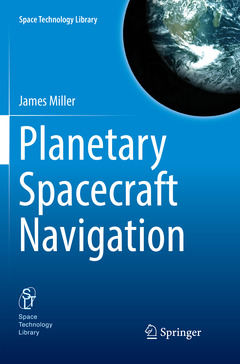Description
Planetary Spacecraft Navigation, 1st ed. 2019
Space Technology Library Series, Vol. 37
Author: Miller James
Language: English
Subjects for Planetary Spacecraft Navigation:
Keywords
jet propulsion laboratory; navigation theory; planetary space navigation; deep space network; trajectory design; orbit determination; space mission optimization; spacecraft motion equations; comet navigation; asteroid navigation; mathematics behind digital navigation programs; mathematics of space navigation
Approximative price 94.94 €
In Print (Delivery period: 15 days).
Add to cartPublication date: 01-2019
Support: Print on demand
Publication date: 09-2018
Support: Print on demand
Description
/li>Contents
/li>Biography
/li>Comment
/li>
James Miller worked as the assistant Navigation Team Chief on the Viking Mission to Mars in 1976. In 2000, he received the Mechanics and Control of Flight medal from the AIAA for his design of the navigation system for the first orbiting and landing on the asteroid Eros. Further, he designed a trajectory to leave Earth and orbit the Moon with no propulsive maneuvers. This was the first practical solution of the four-body problem, and it has since been used on the missions Hiten, Genesis, and Grail.
Offers an in-depth look into the resources and technologies used at the Jet Propulsion Laboratories, including the Deep Space Network
Explains the mathematical reasoning behind navigation computer programs
Examines the success and failure of real-world navigation theory application in previous space missions
These books may interest you

Formal Methods in Outer SpaceEssays Dedicated to Klaus Havelund on the Occasion of His 65th Birthday 58.01 €

Low-Energy Lunar Trajectory Design 156.31 €


